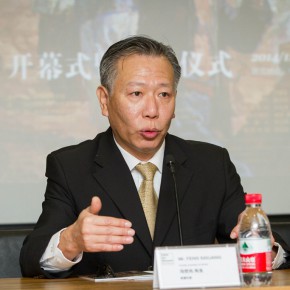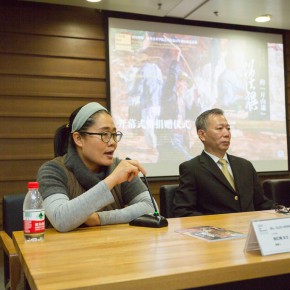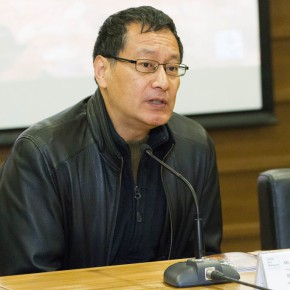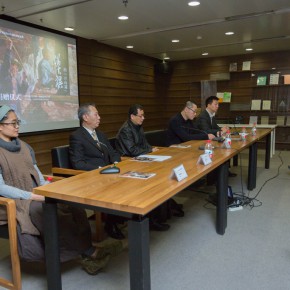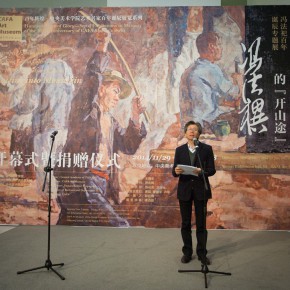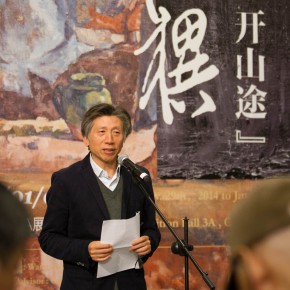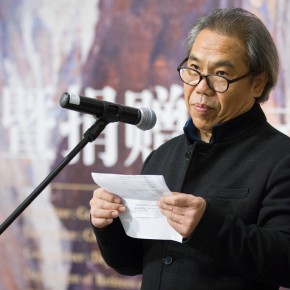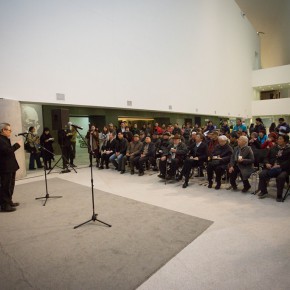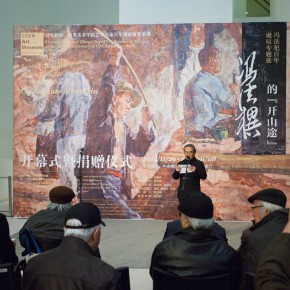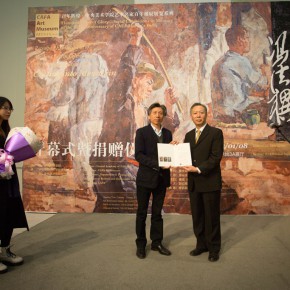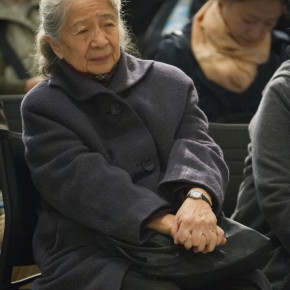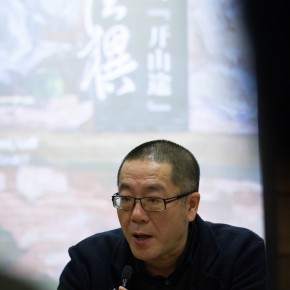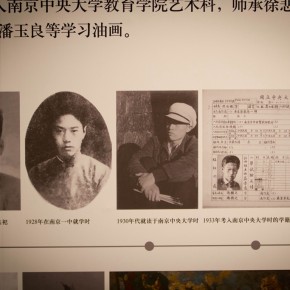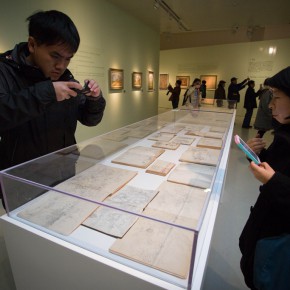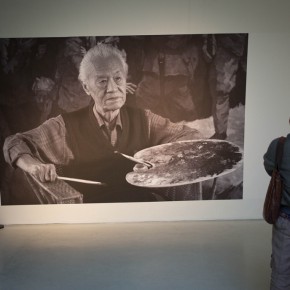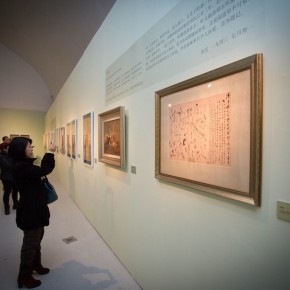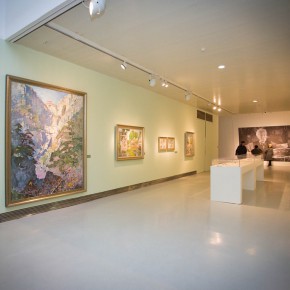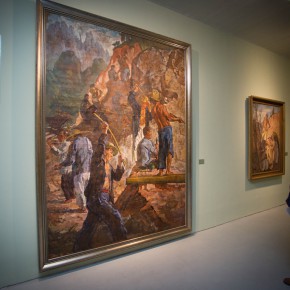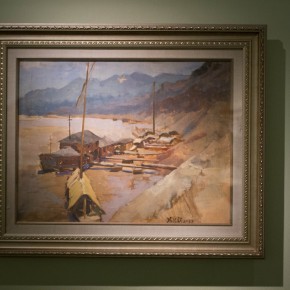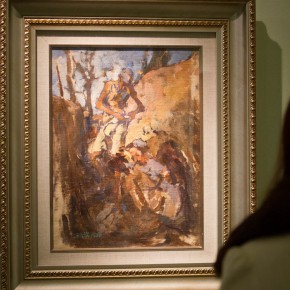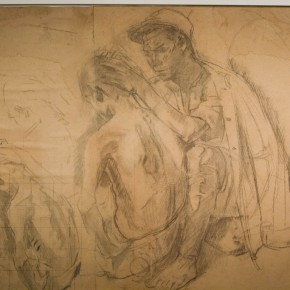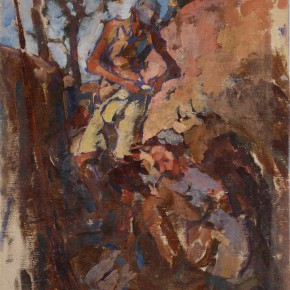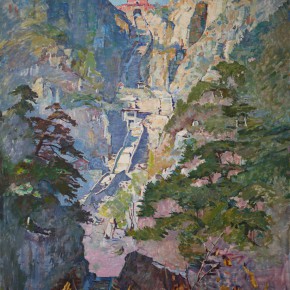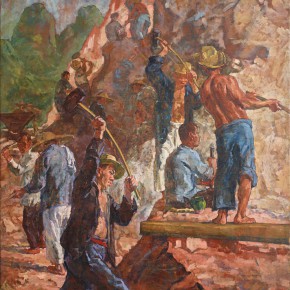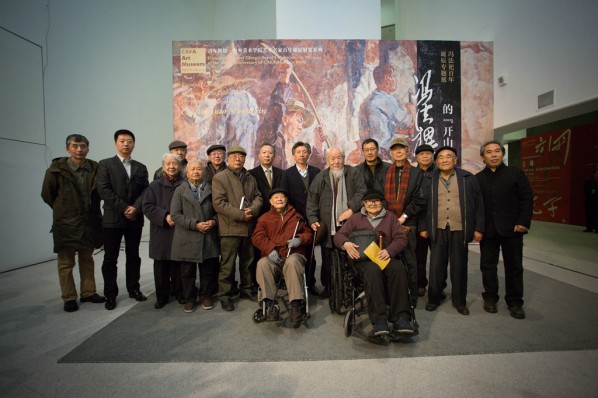
Feng Fasi always quickly sketches the touching scenes on the battlefield and base in his paintings, using novel themes, performing profoundly, which is the essential, if the most valuable reality is lost, it will become meaningless. Feng is able to grasp the theme and perfectly perform it, so with regard to his paintings, they are precious harvests in the War of Resistance against Japan.
- Xu Beihong
On November 29, 2014, hosted by CAFA, jointly organized by CAFA Art Museum, the Department of Publicity, the Department of Oil Painting and the Office of Retired Staff, an thematic exhibition of Feng Fasi in commemoration of the centenary of his birth entitled the “Cutting into Mountain” was unveiled at CAFA Art Museum, it is another academic retrospective art exhibition following the “Art for Life” Retrospective Art Exhibition Celebrating the 100th Anniversary of Feng Fasi’s Birth, held by National Art Museum of China in this June. This exhibition focuses on the 1940s going through to the 1950s, which are two important periods of Feng Fasi’s realistic art creation, “Road of Cutting into Mountain” is a phrase with a double meaning, on the one hand, referring to the representative “Cutting into Mountain” which is first seen by the audience at the exhibition, one the other hand, “road” emphasizes the “process”, driving at the practical process of Feng Fasi’s excavation of the mountain of the realism, and the exhibition showcases a large number of manuscripts, to reflect Feng Fasi’s realistic attitude and the procedural aesthetics in his art creation.
Feng Fasi was a disciple of Xu Beihong, is an outstanding realistic oil painter in China, left many universally praised works in each period, occupying an important position in the history of art, curator of the exhibition Dr. Guo Hongmei said Feng Fasi’s Realism had a distinctive theme and language characteristics, was a realism of humanism, humanitarianism feelings. Ma Lu, Dean of the School of Plastic Arts, CAFA, also mentioned Feng Fasi’s heritance of Xu Beihong’s realism, not only in the techniques, but also in the idea of creation, for example, Xu Beihong emphasized “Using the square instead of the circular, a kind of drawing method using square surfaces to shape the objects”, so Feng Fasi clearly placed the colors by his brush in the creation. At the press conference, Director Wang Huangsheng said the exhibition focused on “Delousing” which didn’t perform tall and heroic images, but the life scene in which ordinary soldiers rested in the trench, which was a special perspective of the War of Resistance against Japan, more highlighting the difficulty of the war. Wang Huangsheng also said that the exhibition started from the perspective of the “academy”, focused on the discovery of the historical details, to reproduce the process of creating the classics.
Wang Shaojun, Deputy Party Secretary of CAFA presided over the opening ceremony of the exhibition, Fan Di’an, President of CAFA attended and addressed the opening ceremony, he said the exhibition was not only an activity in commemoration of the centenary of Feng Fasi’s birth, but also combing through the academic classics once again, and part of the “Hundred Years of Glory• Series Exhibitions in Memory of the 100 Anniversary of CAFA Master’s Birth”, and CAFA would rigorously meet the 100th year. Senior teachers of CAFA such as Saone Chang, Hou Yimin, Deng Shu, Zhou Lingzhao, and so on also attended the opening ceremony of the exhibition. On the occasion of the exhibition, Zhang Yunxian and Feng Shiguang, family members of Feng Fasi donated 55 pieces (sets) of Feng Fasi’s works of oil painting and sketch to CAFA Art Museum which permanently collected them, while this batch of works greatly enriches the CAFAM’s sequential collection on the history of Chinese oil painting in the 20th Century. President Fan Di’an awarded the collection certificate to Feng Shiguang.
The whole exhibition is divided into three parts, and when entering the exhibition hall, the audience will initially see the first part featuring a variety of editions of two oil paintings “Cutting into Mountain” and “Delousing” as well as more than 40 pieces of manuscripts. “Delousing” performs the historical fact that the Chinese Expeditionary Force resisted Japanese aggression in the Sino-Burmese boundary, while the creation of “Cutting into Mountain” is themed on the construction of railway on the base away from the battlefield, these works reveal two major themes of the times of “battlefield and base”, “salvation and survival” of the 1940s, and also representing the style and characteristics of the realistic creation of Feng Fasi of the 1940s. The works reveal Feng Fasi’s drawing method that is quickly sketching, focusing on the whole relationship, defying trivial conventions.
The second part features the “Sketch of Landscape” series of creation by Feng Fasi. In 1955, when Maximov held a training class of oil painting in China, Feng Fasi was 41 years old, resigned and participated in the class of Maximov. After the end of the courses, Maximov led part of the students to travel and sketch across the country. This section features the works of “sketch of landscape” created during this period, which did not only record Feng Fasi’s sketch footprint, but also showcase his using new creative techniques in the new historical period, to have a new exploration on the road of artistic creation of realism.
The third part of the exhibition is “Climbing up the Peak of Art”, to feature a few unfinished works by Feng Fasi before his passing away, including “The Ancient Town of Luzhi of Su zhou” series as well as “Distantly Looking at the Heavenly Southern Gate” which is debuted. Feng Fasi is a pure artist, keeping painting all his life, holding a pen when he passed away. This group of paintings that are the last ones painted before his death, on the one hand vividly reflect Feng Fasi diligently painting all his life, the character of bravely climbing up the peak of art; on the other hand it also helps people better understand the life of Feng Fasi that is “Art for Life, Life for Art”, and memorizing Feng Fasi by this way.
The exhibition will continue to January 8, 2015.
Text by Zhang Wenzhi, translated by Chen Peihua and edited by Sue/CAFA ART INFO
Photo by Hu Zhiheng/CAFA ART INFO


